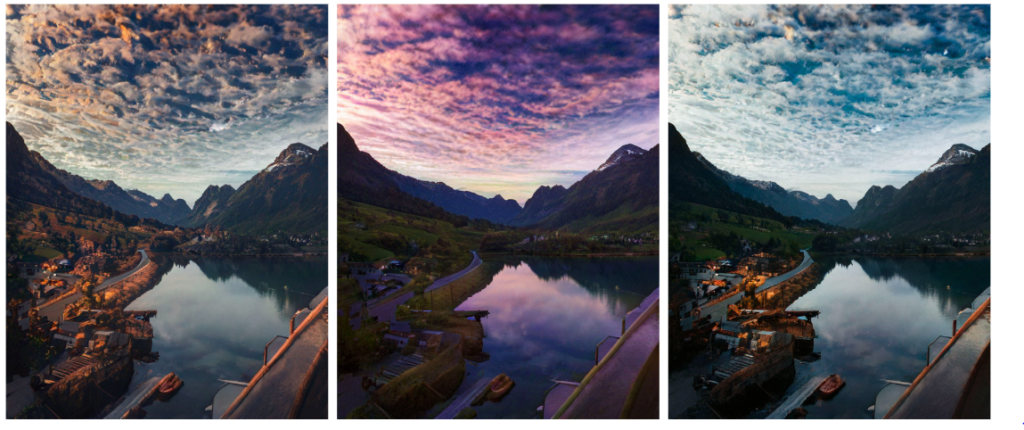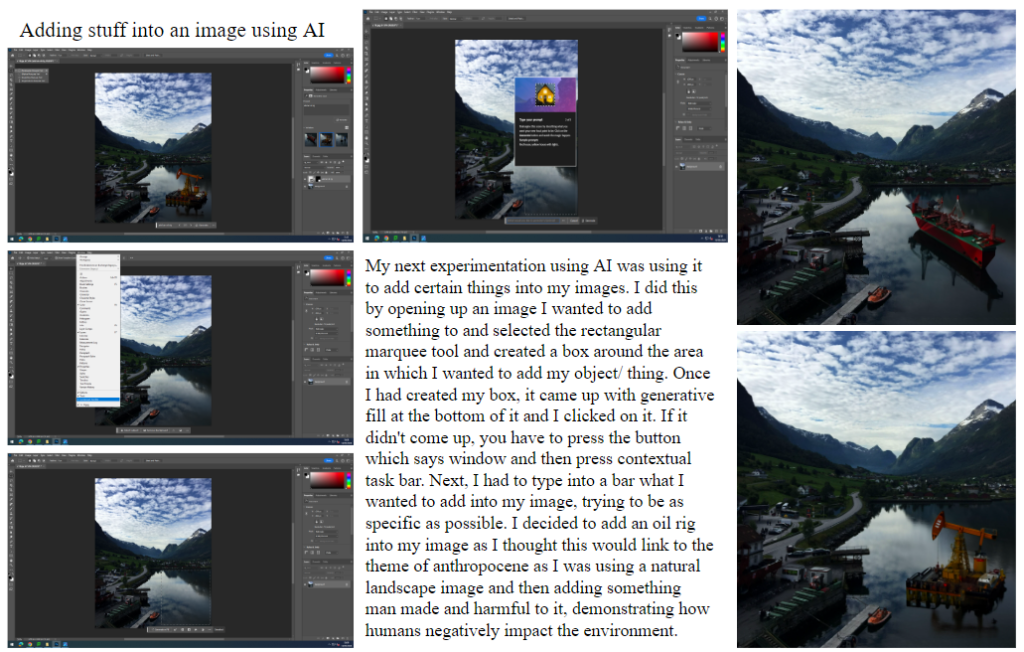AI photography refers to a form of photography that utilises artificial intelligence to either generate new images or enhance existing ones that mimic real photographs. One of the most exciting applications of AI-generated photography is the creation of synthetic photo studios. It’s particularly remarkable for its capability to create virtual photo studios. These digital environments empower photographers to produce realistic images without physical studios or equipment, offering flexibility in location, lighting, backgrounds, and subjects, without the typical logistical challenges of traditional photo shoots.
AI-powered tools can analyse photographs and calculate optimal exposure, correct colours, and adjust shadows, among other enhancements. These tools aim to streamline the photo culling and editing process, offering faster and more customised processing and adjustments.
How Does AI Improve Your Photography?
AI can improve the way photographers capture images by making post-processing less time-consuming and more focused on capturing shots. Here are some examples:
1) AI-powered autofocus systems can help photographers take sharper and more in-focus images, even in challenging situations. This can free up photographers to focus on other aspects of composition and lighting.
2) AI-powered noise reduction can help photographers reduce noise in images, especially those taken in low-light conditions. This can make images look cleaner and more professional, without having to spend hours in post-processing.
3) AI-powered image-upscaler can help photographers upscale low-resolution images to higher resolutions. This can be useful for printing photographers’ images or for displaying them on large screens.
4) AI-powered style transfer can help photographers transfer the style of one image to another. This can be a fun way to create unique and creative images, without having to spend a lot of time in post-processing.
5) AI-powered background removal can help photographers remove the background from an image, leaving only the subject. This can be useful for creating product images or for creating composite images, without having to mask out the background manually







For this idea, I combined my piece inspired by Giacomo Costa and wanted to add a gap in the buildings which would reveal a natural landscape. I did this by opening up the Giacomo Costa inspired piece and then opening up an image of a natural landscape that I had taken. I then put the natural landscape image layer behind the Giacomo Costa level. Next, I selected the magnetic lasso tool and made a hole shape with rough edges to make it look like there was a crack in my image. Once I had made this cut out, I then right clicked and pressed layer via cut, creating a hole in my top layer and then making the bottom layer visible. To finish off this idea, I then decided to add a drop shadow to the hole to make it have more depth and look more realistic. Finally, I experimented with this idea by making the buildings layer black and white and then the natural landscape layer colourful. This made it stand out more and highlight the difference between the two types of landscapes. I like how this idea came out as it shows two polar opposite landscapes (one which has been destroyed and built on by humans and the other beautiful and undestroyed).

For these images, I wanted to incorporate futuristic and modern things into a landscape image I had taken and then incorporate old objects/ things into another landscape in order to highlight how different our world is now compared to before. I decided to add a sepia photo filter onto the old image in order to give off the impression of aging and make it look vintage. Overall, I think this was a good first attempt at experimenting with time and AI but next time I would research what type of things were seen in the past as I struggled with ideas of what to add to my image.
